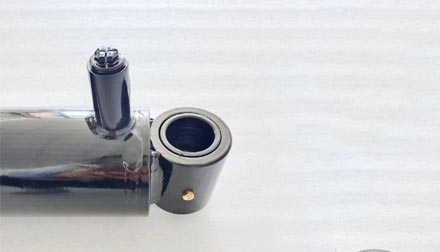Nov . 27, 2024 23:54 Back to list
High-Performance Dual Piston Hydraulic Cylinder Solutions for Various Applications
Understanding Dual Piston Hydraulic Cylinders A Comprehensive Overview
Hydraulic systems have revolutionized the way mechanical tasks are performed across various industries. Among the pivotal components of these systems is the hydraulic cylinder, which converts hydraulic energy into linear motion. Among the different types of hydraulic cylinders, dual piston hydraulic cylinders stand out due to their unique design and versatility. This article aims to explore the workings, applications, advantages, and considerations of dual piston hydraulic cylinders.
What is a Dual Piston Hydraulic Cylinder?
A dual piston hydraulic cylinder consists of two pistons operating within a single cylinder barrel. This design allows for increased force output and improved efficiency compared to traditional single-piston models. The two pistons can work in conjunction or independently, depending on the application's specific requirements. The dual piston setup enhances the cylinder's performance, enabling it to handle more demanding tasks and larger loads.
Working Principle
The dual piston hydraulic cylinder operates on the principle of fluid mechanics. When hydraulic fluid is pumped into the cylinder, it exerts pressure on the pistons. This pressure generates a force that moves the pistons along the cylinder's length. The movement of one piston can also create a counteracting force on the other piston, making it possible to achieve greater control and precision in applications requiring fine movements.
Advantages of Dual Piston Hydraulic Cylinders
1. Increased Force Output With two pistons, these cylinders can produce more force, making them suitable for heavy-duty applications. This increased output is particularly beneficial in industries such as construction, manufacturing, and maritime operations.
2. Enhanced Control and Precision The ability to operate two pistons independently allows for more refined control over movements. This feature is critical in applications where precision is paramount, such as robotic arms or heavy machinery requiring careful positioning.
3. Better Stability Dual pistons contribute to enhanced stability during operation. By distributing the load across two pistons, the system can maintain equilibrium, reducing the risk of mechanical failure and enhancing longevity.
4. Versatility Dual piston hydraulic cylinders can be designed for various configurations and sizes, which makes them adaptable to numerous applications. From actuating large machinery to facilitating simple mechanical tasks, their versatility is a significant advantage.
Applications
Dual piston hydraulic cylinders are widely used across various sectors, including
dual piston hydraulic cylinder products

- Construction In heavy machinery like excavators and bulldozers, dual piston cylinders provide the necessary force and control for lifting and moving large loads.
- Manufacturing Assembly lines often employ dual piston cylinders for tasks requiring precise positioning and repetitive motions, enhancing productivity and efficiency.
- Automotive In automotive repair shops, dual piston hydraulic systems can be used in lifts to raise vehicles safely, allowing technicians to work underneath them.
- Robotics Many robotic systems utilize dual piston cylinders for precise movements, enabling complex tasks that require accuracy and agility.
Considerations When Choosing Dual Piston Hydraulic Cylinders
When selecting a dual piston hydraulic cylinder for a specific application, several factors should be considered
1. Size and Stroke Length The size of the cylinder and the required stroke length must be determined according to the operational needs. A customized design may be necessary for specialized applications.
2. Pressure Rating Each application has specific pressure requirements, and selecting a cylinder that can withstand the necessary hydraulic pressure is crucial for safety and performance.
3. Material Selection The materials used in the construction of the hydraulic cylinder impact its durability and resistance to environmental factors such as corrosion and wear.
4. Maintenance Requirements Regular maintenance is essential for the longevity of hydraulic systems. Understanding the maintenance needs of dual piston hydraulic cylinders can help ensure continuous operation.
Conclusion
Dual piston hydraulic cylinders provide a powerful and efficient solution for a wide range of industrial applications. Their unique design allows for enhanced performance, greater control, and increased versatility. Understanding their principles, advantages, applications, and selection considerations can aid engineers and technicians in making informed decisions that optimize efficiency and productivity in hydraulic systems. As technologies advance, the role of dual piston hydraulic cylinders will continue to be integral in shaping the future of hydraulic engineering.
-
Fork Lift Power Units - Hebei Shenghan | Efficiency, Reliability
NewsJul.13,2025
-
1.5-Ton Turbocharged Cylinder-Hebei Shenghan|Hydraulic Solution,Energy Efficiency
NewsJul.13,2025
-
Auto Hoist Power Units-Hebei Shenghan|Efficiency&Industrial Lifting
NewsJul.13,2025
-
Double Acting Power Units-Hebei Shenghan|Hydraulic Solutions,Industrial Efficiency
NewsJul.13,2025
-
1.5 Ton Lifting Cylinder 70/82-40-290-535 - High-Performance Hydraulic Solution | Hebei Shenghan
NewsJul.13,2025
-
Fork Lift Power Units - Hebei Shenghan | Efficiency&Reliability
NewsJul.13,2025
